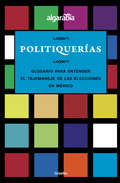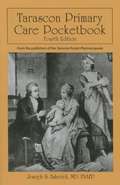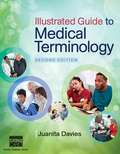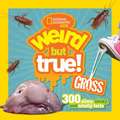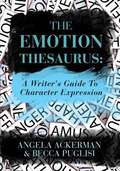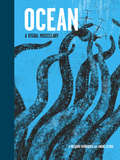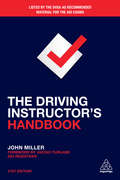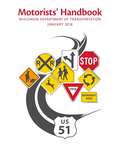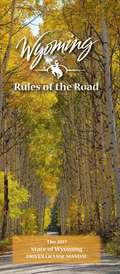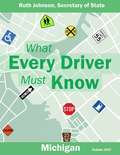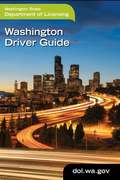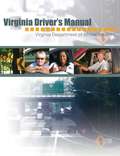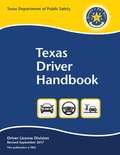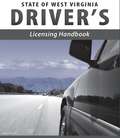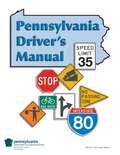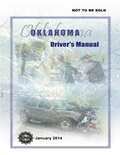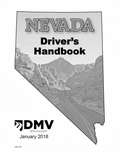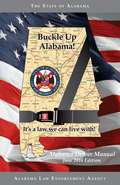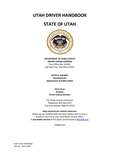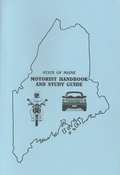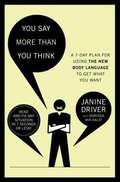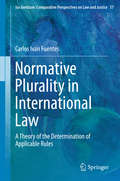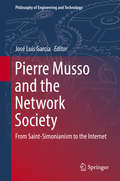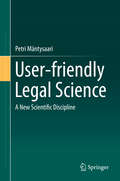- Table View
- List View
Politiquerías: Glosario para entender el tejemaneje de las elecciones en México
by AlgarabíaPásele, sin temor ni aficiones encarnadas, a dar un recorrido al estrambótico y singular mundo del voto y el votado. Cada sexenio durante época de elecciones, o incluso cada día, nos encontramos con que los políticos de nuestro país nos ofrecen una gran cantidad de términos que a veces no entendemos y en otras ocasiones permanecen grabados en lo más profundo de la memoria. Las páginas venideras están llenas de triquiñuelas y felonías, en las que encontrará divertimentos y acepciones -cada una con su ejemplo de la vida real- de actos frecuentes en nuestro complejo sistema democrático. También disfrutará de datos curiosos sobre nuestros expresidentes, mandamientos para el «buen político», citas literarias, de personajes famosos y del pueblo; en fin, un amplio panorama de colores y tonos para entender -si esto es posible- un poco más del toma y daca, el tejemaneje y el estira y afloje de las elecciones en nuestra gran nación. Pásele, sin temor ni aficiones encarnadas, a dar un recorrido al estrambótico y singular mundo del voto y el votado.
Tarascon Primary Care Pocketbook (Fourth Edition)
by Joseph S. EsherickThe Tarascon Primary Care Pocketbook, Fourth Edition is intended to be a quick reference guide for clinicians and students practicing primary care medicine. I have attempted to compile the core information about most primary care topics in a concise format.
Illustrated Guide to Medical Terminology (Mindtap Course List Series)
by Juanita J. DaviesThe text teaches fundamental medical terms using word parts, without bogging down in detailed anatomy and physiology discussions. A highly visual approach--with abundant use of tables, charts, and illustrations--makes the text an effective resource for readers of diverse backgrounds, including ESL speakers, individuals focused on career preparation, and auditory and visual learners.
Weird but true! GROSS: 300 Slimy, Sticky, and Smelly Facts (Weird But True Series)
by National Geographic KidsThis 'Weird But True' title is slimy and sticky and jam-packed with more icky, zany fun! Step up to the plate and try not to lose your lunch, with 300 amazing facts plus photos that kids just can't get enough of.
The Emotion Thesaurus: A Writer's Guide To Character Expression
by Angela Ackerman Becca PuglisiOne of the biggest problem areas for writers is conveying a character's emotions to the reader in a unique, compelling way. This book highlights 75 emotions and lists the possible body language cues, thoughts, and visceral responses for each. Readers can draw inspiration from character cues that range in intensity to match any emotional moment. The Emotion Thesaurus also tackles common emotion-related writing problems and provides methods to overcome them. This writing tool encourages writers to show, not tell emotion and is a creative brainstorming resource for any fiction project.
Ocean: A Visual Miscellany
by Ricardo Henriques Andre LetriaHalf of our planet is covered by the ocean, yet we've only explored 5 percent of this vast underwater realm. Originally published in Portugal, and awarded a highly coveted BolognaRagazzi Mention by the Bologna Book Fair, this visually compelling miscellany offers readers a tsunami of aquatic facts. Which ocean is the largest? Who was the first explorer to sail around the world? Is the ocean truly blue? Beautifully designed and rich with information, Ocean will satisfy enthusiastic readers who enjoy taking a deep dive into a subject as well as more reluctant readers who prefer to dip in and out of a book.
The Driving Instructor's Handbook: A Reference And Training Manual
by John MillerNow in its 21st edition, The Driving Instructor's Handbook is widely recognized in the driver training industry as the authoritative reference guide for both trainee and qualified instructors and is listed by the Driver and Vehicle Standards Agency (DVSA) as recommended reading for the Approved Driving Instructor (ADI) exams.This best-selling text covers every aspect of the profession, from the role itself, to the characteristics needed to do the job effectively through the preparation for the three ADI exams (theory and hazard perception, driving ability and instructional ability). The Driving Instructor's Handbook also includes detailed guidance on issues such as licences, training, teaching and coaching skills and road traffic law and covers all 2016/17 changes to the ADI examinations and standards checks, including the most recent essential updates from late 2017. This handbook is essential reading for anyone involved in the training of drivers and instructors at all levels and will ensure that new drivers are better able to cope with the increasing demands made on them.
Wisconsin Motorists' Handbook
by Wisconsin Department of Transportation<p>This manual is intended to inform the user of the rules of the road (Wisconsin state laws and Administrative Rules) and provide important safety tips. Information in this and other handbooks and manuals published by the Division of Motor Vehicles is not all-inclusive and is subject to change at any time due to new or revised laws. <p>This manual gives you information on driving rules and practices to help you become a safe driver of a car or light truck (Class D license). <p>If you want a Commercial Driver License (CDL) to drive a commercial motor vehicle (heavy truck, bus, Class A, B, or C), you should study the Wisconsin Commercial Driver's Manual. <p>If you want a license to operate a motorcycle (Class M license), you should study the Motorcyclists' Handbook.</p>
Wyoming Rules of the Road: The 2017 State of Wyoming Driver License Manual
by Wyoming Department of TransportationWyoming Rules of the Road - The 2017 State of Wyoming Driver License Manual by the Wyoming Department of Transportation
What Every Driver Must Know: Michigan
by The Michigan Secretary of State’s OfficeThis newest edition of What Every Driver Must Know has a new look and size. A resource guide is presented in the back of the booklet that provides other sources for information, such as websites, printed materials and a customer service number if you want to know more about the topics in What Every Driver Must Know.
Washington Driver Guide
by Washington State Department of TransportationWashington Driver Guide by the Washington State Department of Transportation
Virginia Driver's Manual
by Virginia Department of Motor Vehicles<p>The Virginia Driver's Manual will help you learn and understand safe driving practices. Study this manual to prepare for the knowledge test, obtain a Virginia driver's license and become a safe driver. <p>The information contained in this manual should be used as a general guide to the motor vehicle laws but not as a substitute for the Code of Virginia, which contains the laws that govern Virginia drivers and vehicles. <p>If you are learning to drive, this manual will give you information you need to study for the knowledge exam. If you already have a Virginia driver's license, review this manual for new laws or rules of the road. <p>Driving is a privilege, not a right. Your driver's license carries with it a great responsibility to be courteous of other drivers on the roadways and follow state and federal motoring laws. This manual is also available on the DMV website, www.dmvNOW.com. <p>DMV offers the Virginia Driver's Manual in an audio format for Virginians with special needs. The audio version is available at www.dmvNOW.com.</p>
Texas Driver Handbook
by Texas Department of Public Safety<p>The Texas Department of Public Safety, Driver License Division, is committed to creating a faster, easier, and friendlier driver license experience and a safer Texas. One step toward achieving these important goals is to continuously improve the <i>Texas Driver Handbook</i> by providing you with accurate information on traffic laws, clear images of road signs, examples of common driving situations, and general safety tips. We have also included special tips to emphasize important information you need to know. <p>Although the Texas Driver Handbook has been revised, its primary purpose remains the same: 1) to help you qualify for a Texas driver license, and 2) to help you become a safer driver. The information contained in this handbook is not an official legal reference to Texas traffic laws. The information provided is only intended to explain applicable federal and state laws you need to understand in order to successfully operate a motor vehicle in Texas. If you would like to know the actual language of any traffic or criminal laws referenced in this handbook, please refer to the Texas Transportation Code and Texas Penal Code. <p>Once you receive your Texas driver license, keep this handbook as a reference on traffic safety and update it as needed. The Texas Legislature meets every two years and regularly makes changes to traffic laws. For the most current information on driver licensing visit our website at http://www.dps.texas.gov/DriverLicense/.</p>
State of West Virginia Driver's Licensing Handbook
by Department of Transportation State of West Virginia<p>The driver examination program provides fundamental education in traffic safety and allows you to match your driving ability with accepted standards for safe driving. <p>This manual is only a partial digest of West Virginia motor vehicle laws. As a prospective driver, you should become familiar with all of the information in this manual. It will enable you to pass the driver examination and help you become a good driver.
Pennsylvania Driver's Manual
by Pennsylvania Department of Transportation<p>This manual is designed to help you become a safe driver. It presents many of Pennsylvania's laws governing driving. It should be used as a general guide to the laws but not as a substitute for the Pennsylvania Vehicle Code, which contains the laws affecting Pennsylvania's drivers and vehicles. It should also be noted that the information contained in this manual is subject to change. <p>The purpose of this manual is to prepare you to take the driver's examination and to obtain a Pennsylvania driver's license. However, the rules of the road and traffic operation principles presented in this manual apply to the three types of vehicles recognized by Pennsylvania law: bicycles, horse-drawn vehicles and motor vehicles. For example, all bicyclists, just like motorists, are required to stop at red lights. <p>If you are learning to drive, this manual will give you all the information you need to study for the driver's examination. If you already have a Pennsylvania driver's license, you can use this manual to review some of the rules of the road you may have forgotten or to learn about some of the rules that may be new or have changed since you received your license.</p>
Oklahoma Driver's Manual
by Oklahoma Department of Public Safety<p>This handbook is written to help you qualify for an Oklahoma Driver License and become a safe driver. It is not an official legal reference to Oklahoma traffic laws, but explains in everyday language the knowledge and skills you will need to drive safely and legally on Oklahoma's roads and highways. <p><i>The Oklahoma Driver Manual</i> presents instructions and general information relating to the operation of motor vehicles in the state of Oklahoma. It is based on the laws and regulations in effect at the time of publication.
New Mexico Driver Manual
by New Mexico Motor Vehicle DivisionNew Mexico Driver Manual by the New Mexico Motor Vehicle Division
Nevada Driver's Handbook
by Nevada Department of Motor Vehicles<p>This handbook has been written in an informal style for easy reading. As you read, you will find information on the knowledge, skills, abilities and attitudes you need to drive safely. <p>You will also find general licensing requirements, some basic traffic laws, explanations of signs and signals, material on driving under the influence and defensive driving tips. The knowledge test for your Nevada license is based on the information in this manual. <p>However, this handbook does not give the exact wording of traffic laws and it does not discuss all of them. For specific laws, please refer to the Nevada Revised Statutes (NRS). NRS copies are available in the public libraries and online at leg.state.nv.us/law1.cfm</p>
Alabama Driver Manual (June 2016 Edition)
by Alabama Law Enforcement AgencyAlabama Driver Manual June 2016 Edition by the Alabama Law Enforcement Agency
Utah Driver Handbook
by Utah Department of Public Safety - Driver License Division<p>This manual contains the rules which should be followed when operating any vehicle on Utah roads. The operator of a bicycle must obey the same rules of the road, and has the same rights and duties as the operator of a motor vehicle or other vehicle. <p>NOTE: Please beware of imitator websites. For accurate Driver License information and forms visit: dld.utah.gov.</p>
State of Maine Motorist Handbook and Study Guide
by State of Maine Bureau of Motor Vehicles<p>One of life's great rites of passage is obtaining our first driver's license. It represents a milestone in independence; indeed, with the invention of the automobile, the ability to operate a motor vehicle represents the greatest level of freedom, flexibility, and mobility in human history. As exciting as having a valid license and a dependable motor vehicle can be, great danger awaits the unwary motorist. Let us never forget that we are driving a two thousand pound piece of steel. We must be vigilant, at all times, in our attention to driving to protect not only ourselves, but all others who are sharing Maine's roadways. <p>As you review and learn the contents of this manual, it is important to keep in mind that everything around you as a driver--from the painted lines in the road, the road signs, traffic control lights and rumble strips to the safety belts, directional signals, airbags, and anti-lock brakes--has been developed and mandated for use because, in their absence, someone died. While these devices greatly enhance the odds of emerging safely from a crash, the most critical component is the skill of the operator. That's where you come in.<p>
You Say More Than You Think: Use the New Body Language to Get What You Want!, The 7-Day Plan
by Mariska Van Aalst Janine DriverNow You're Talking!Do you want to be bulletproof at work, secure in your relationship, and content in your own skin? If so, it's more important than ever to be aware of what your body is saying to the outside world. Unfortunately, most of what you've heard from other body language experts is wrong, and, as a result, your actions may be hurting, not helping, you. With sass and a keen eye, media favorite Janine Driver teaches you the skills she used every day to stay alive during her fifteen years as a body-language expert at the ATF. Janine's 7-day plan and her 7-second solutions teach you dozens of body language fixes to turn any interpersonal situation to your advantage. She reveals methods here that other experts refuse to share with the public, and she debunks major myths other experts swear are fact: Giving more eye contact is key when you're trying to impress someone. Not necessarily true. It's actually more important where you point your belly button. This small body shift communicates true interest more powerfully than constant eye contact.The "steeple" hand gesture will give you the upper hand during negotiations and business meetings. Wrong. Driver has seen this overbearing gesture backfire more often than not. Instead, she suggests two new steeples that give you power without making you seem overly aggressive: the Basketball Steeple and the A-OK Two-Fingered Steeple. Happy people command power and attention by smiling just before they meet new people. Studies have shown that people who do this are viewed as Beta Leaders. Alpha leaders smile once they shake your hand and hear your name. At a time when every advantage counts--and first impressions matter more than ever--this is the book to help you really get your message across.From the Hardcover edition.
Normative Plurality in International Law
by Carlos Iván FuentesThis book provides a theoretical framework for explaining the choices made by international decision-makers in terms of what constitutes law. It comprehensively analyzes the practice of human rights courts in applying legal instruments outside their competence and proposes that this practice recognizes that different normative instruments coexist in an un-ordered space, and that meaning can be produced by the free interaction of those instruments around a problem. Based on this, the book advances its normative plurality hypothesis, which states that decision-makers must survey the acquis of international law in order to identify all the instruments containing relevant normative information for a particular situation. The set of rules of law applicable to the situation must then be complemented with other instruments containing specific normative information relevant to the situation, resulting in a complete system of norms advancing a common purpose.
Pierre Musso and the Network Society
by José Luís GarciaThis book is devoted to discussion of the views of Pierre Musso and starts with a central chapter written by Musso, entitled Network Ideology: from Saint-Simonianism to the Internet . Pierre Musso is a French philosopher and is one of the most original thinkers in the history of the network society. His thought develops a critique of information and communication technologies through their imaginary and social representations and of the information society, based on the network metaphor.The main question on which Musso has focused his attention is how the network metaphor is one of the most powerful ways of understanding the complex societies in which we live. Showing characteristic attention to detail, and drawing on the history of ideas, political philosophy and sociology, Musso traces the genealogy of the network imaginary, and points out that it did not emerge with the Internet. He shows how its modern roots can be found in Henri de Saint-Simon and his disciples, engineers and entrepreneurs such as Michel de Chevalier, and Barthélemy Prosper Enfantin, who developed channel networks, railroads, and the telegraphic network in France in the nineteenth century. In addition to the central piece written by Musso, the book includes a general introduction and six commentaries from experts on information technologies and networks. It displays a wide range of perspectives from a diverse set of authors in terms of nationalities and universities, as well as disciplinary backgrounds.
User-friendly Legal Science
by Petri MäntysaariThis book defines the characteristics of a new discipline that is both legal and scientific: user-friendly legal science.Focusing on how legal tools and practices can be used to achieve objectives in different contexts, it offers an alternative to doctrinal research, law-and-something disciplines, and the traditional interdisciplinary approach.The book not only defines the new discipline’s research approach, point of view, theory-building, and research methods, it also shows how it relates to other scientific disciplines and how existing doctrinal legal disciplines can be upgraded into scientific disciplines.
